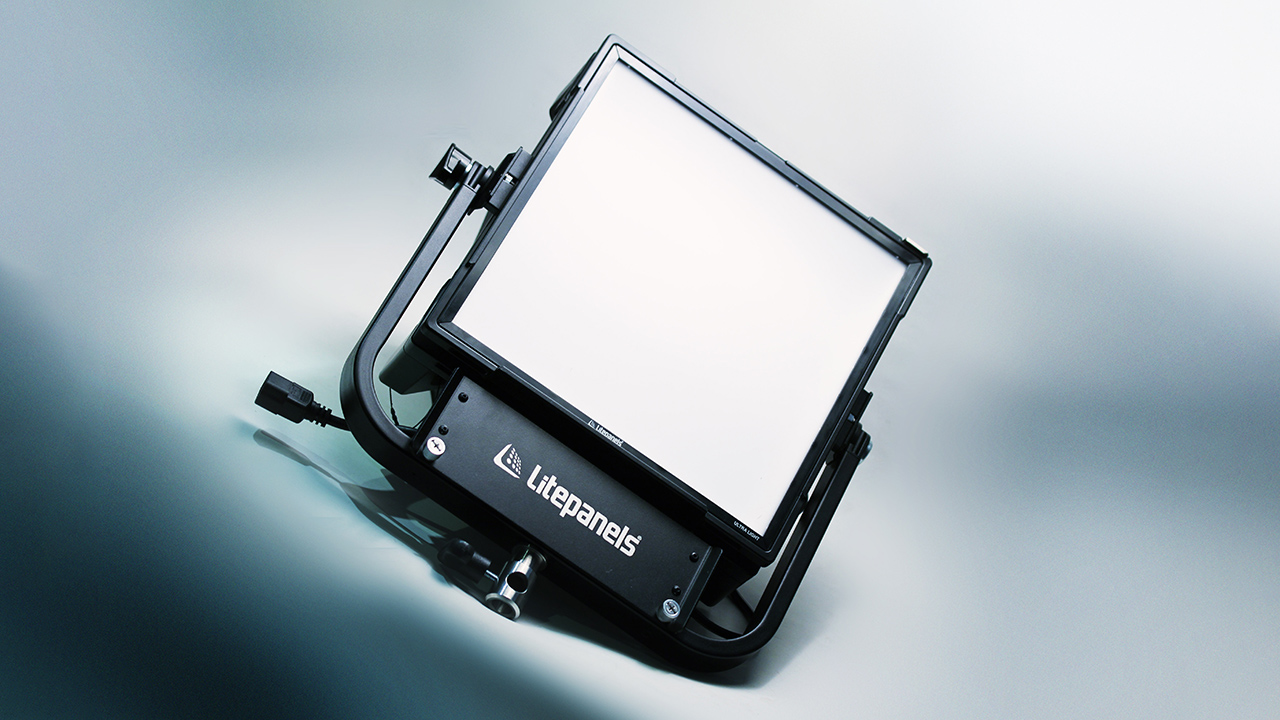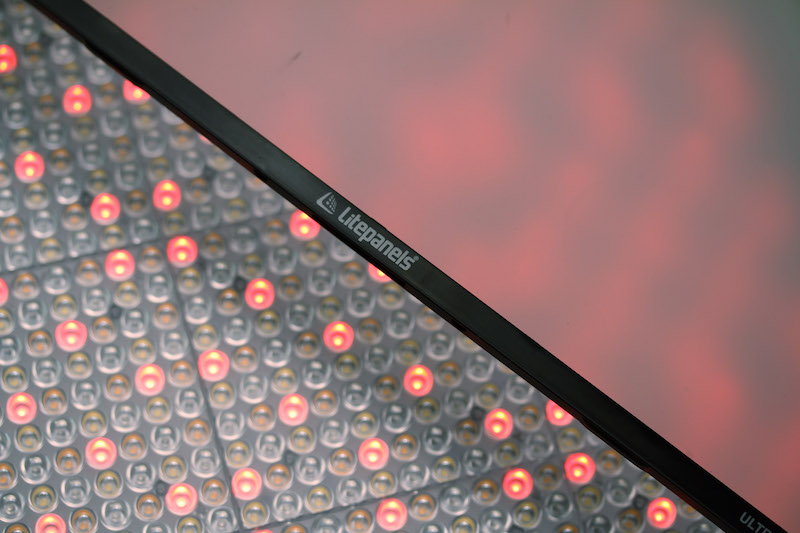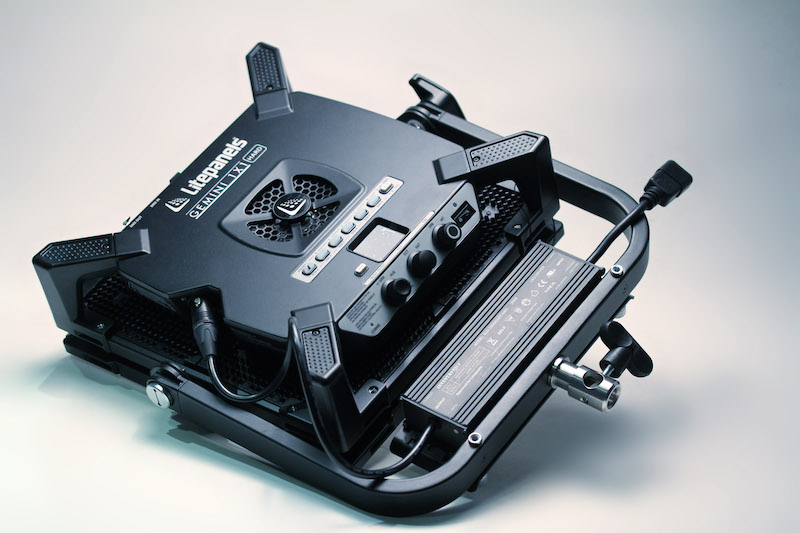
Litepanels' latest offering, the Gemini 1x1 Hard promises to give extremely high light output for its size. Does it live up to the hype?
The first LED panel lights were made with emitters shaped like indicator lights, which each had an individual, built-in lens. It created an interesting sort of projecting soft light that would otherwise require diffusion and an armload of flags and stands, but we partially lost that when manufacturers stopped – for perfectly good reasons – making lights with 5mm LEDs.
Modern emitters are often tiny surface-mount chips, and they generally need external optics to produce a beam. Most manufacturers put them behind diffusion, but Litepanels’ Gemini 1x1 Hard is one which adds separate add-on lenses to each emitter, giving us real directional punch in a colour-mixing panel light.
Operationally, the Litepanels Gemini 1x1 Hard is nicely done, adopting a fairly conventional foot-square layout with two layers of removable diffusion if we don’t want hard light today. There is inevitably some shadow segmentation with the light bare. There’s an LCD menu broadly equivalent to that which is on basically all colour mixing LEDs.

Red, green and blue emitters are scattered among the white; here, we see a red gel selected and get an idea of the density of the supplied frost filter.
Gemini 1x1 Hard features
The light inherits the very useful row of preset buttons across the back from other Litepanels designs, which can be programmed with user configurations or toggled back to a factory preset mode of various colour temperatures. The usual huge amount of external controllability exists here, including DMX, RDM, Apollo CRMX, WDMX and Bluetooth. The power supply is external but mounts in the frame, so it can be remoted to save weight. The light powers up with the mains.
The manufacturer claims that the light, which weighs about 6 kilos with power supply, is the brightest in its class, a concomitant of focusing the light into a narrower-than-average beam. The power supply is rated at 200W. Actual power will vary with settings, though as supplied, the light implements a maximum-output algorithm for white light so intermediate colour temperatures around 4200K are brightest. The light was assessed without any diffuser in place, as befits its intended role, and measured at each of 2800, 3200, 4200, 5600 and 6500K, and at 100%, 50% and 5% output.

The row of preset keys optionally represent either used-defined states or common colour temperatures.
Measured light output and colour quality
Measured at one metre, the Litepanels Gemini 1x1 Hard peaks at 29,000lx at 4200K, falling off to 19,500lx at 2800K. 4200K dimming tracks reasonably linearly to 1,648lx at 5%. Colour quality of white light is uniformly excellent, with no TLCI reading lower than 93, which is achieved at 5% output and 2800K. TLCI often falls at very low output; 93 is still in the excellent range. R9 reds, which are crucial for good skin exposure, are well-exposed throughout, with a worst-case (but still good) 85 at 6500K and otherwise all above 90.
R12 blues, which are difficult for any LED not based on phosphor-converted violet emitters, fall no further than 70, even at low output and high CT. Pushing to the highest available CT of 10,000K keeps TLCI above 87, although R12 can fall as far as 68. Overall, this is fine at extreme CTs which activate the very narrow blue emitters. CT accuracy is to within the error on the UPRTek CV600 meter, with a selected 2800 reading precisely 2800 at 100%, and with a maximum error of +137K at any CT. That’s a trivial mired shift of -2 at 5600K.
Green-magenta drift is reasonably well-controlled. In white-light mode, most output comes from principally tungsten- and daylight-emitting LEDs, and it looks as if the light interpolates between those two (it probably doesn’t, but it reads like it does). Output reads microscopically plus-green at 3200K, neutral at 4200K, and swings fractionally back toward the green at 6500K, though this may all be within experimental error. Regardless, there’s adjustability of both CT and green-magenta bias, which should make make it possible to match this light anything, including other manufacturers’ lights.

The row of preset keys optionally represent either used-defined states or common colour temperatures.
Conclusions
There is currently no quality standard for coloured light. The Gemini 1x1 Hard seems to use direct-emission red, green and blue LEDs as opposed to using blue or violet LEDs to illuminate coloured phosphors. Direct-emission means higher output, since phosphors are lossy, and punchier colours, because phosphors achieve their smoother spectrum through wider output. “Wider” means “less saturated,” so phosphor-converted colours can look fractionally pastel by comparison. That can help avoid the issue of illuminating (say) a bright yellow object with light that looks yellow but is in fact made up of narrow bands of red and green. That’s a real edge case, though; either choice would a reasonable choice and Litepanels has optimised for saturation and power.
The UK price for the Litepanels Gemini 1x1 Hard is £1600 (US$2,250). That’s the same range as Aputure’s Nova P300C, which has about half as much power again but which I haven’t seen in person. The 200-watt Rosco DMG SL1 Mix is longer and thinner and around £2000, though using a different approach to the underlying light engine that makes a direct comparison hard.

The menu of special effects, with lots of user-definable parameters.
If we want a full colour mixing panel from Kino-Flo, there’s the 270-watt Celeb 450Q, though it’s twice the size and weight and pushing four times the price. Creamsource’s Vortex8 also has full colour mixing and a lens array for more punch, and works out at a little cheaper per watt, though it’s a 650W device at twice the size.
The Gemini 1x1 Hard is a powerful, directional light, and flexible in that it’s easier to diffuse hard light and harder to collimate soft light, especially combined with full colour mixing. It’s hard to shake the impression that one day soon basically all lights will be made up of six phosphor-converted emitters but that has downsides, especially if we happen to want bright red. It’s quite power-dense on a space and weight perspective and the white light is great. Good, solid choices all round, then, for Litepanels’ latest.
Tags: Production Review


Comments